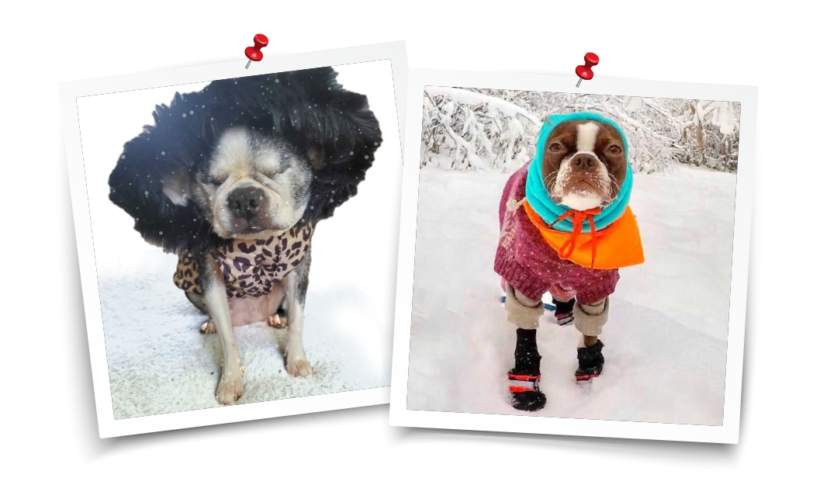Hypothermia is a medical term used to describe a body temperature that is below normal. The most common cause of hypothermia is prolonged exposure to cold environmental temperatures. Boston Terriers aren’t designed for the cold so it is vitally important to watch for signs of hypothermia.
Normal body temperature for dogs is 100.5 to 102.5 degrees Fahrenheit. Signs of hypothermia range from mild to severe, depending on how low body temperature drops.
What to watch for:
- depression
- lethargy
- weakness
- shivering
- muscle stiffness
- low heart and respiratory rates
- stupor
- difficulty breathing
- fixed and dilated pupils
Should your dog display any of these symptoms, bring them to your vet or an emergency animal clinic immediately. Impaired consciousness could result in coma, and complications from hypothermia can be fatal.
In addition to prolonged exposure to cold weather, impaired ability to regulate body temperature can also lead to hypothermia. Flat-faced Boston Terriers and other brachycephalic breeds can’t regulate their body temperatures as efficiently as other dogs and have to be monitored as carefully in winter as they are in summer. Breathing issues can worsen if they are exposed to the cold for too long, or if they get too active in colder temperatures, as cold air will cause constriction of their airways. Boston Terriers puppies, seniors and those with chronic disease are even more vulnerable to the cold. Certain illnesses, such as hypothyroidism, and impaired behavioural responses can also be a factor in the body’s inability to maintain adequate temperature.
It’s not just a fashion statement – because of their short hair, Boston Terriers should be dressed for the weather. As dogs lose most of their body heat from their paws, ears and through breathing, however, coats and other warm winter gear can only offer so much protection.
Boots do offer protection from salt and other chemicals used to melt snow, from ice, and against cuts and chapped paw pads. Hats are adorable but many Bostons dislike the constricting feel of a hat on their large, upright ears, while hats that have holes for the ears leave them exposed to the elements. Ideally, a hat with “built-in” ears is best.
The benefits of wearing outdoor gear, or any type of clothing, should never outweigh any fear or discomfort your dog may experience. Be sure to use positive-reinforcement techniques to introduce a more sensitive pet to any type of clothing.
Preventing hypothermia is key. Do not leave your dog outside in freezing temperatures for any length of time. On frigid days, a quick trip outside to potty is all that’s needed. There are plenty of ways to exercise both your dog’s mind and body indoors. At the end of the day, Boston Terriers are not designed for extreme temperatures, so it’s up to you to keep them safe!


